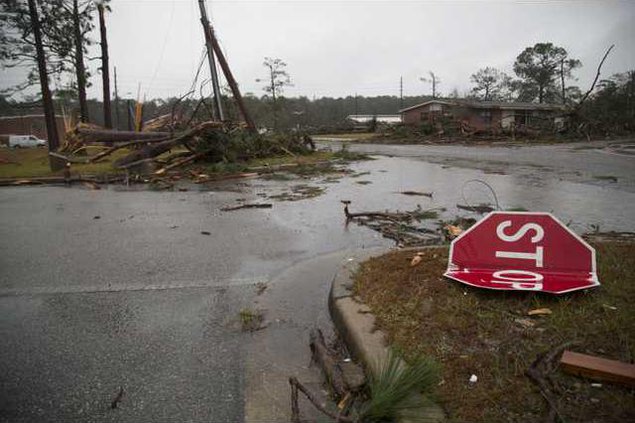After an EF-1 tornado struck Fort Stewart on Feb. 3, the lack of a siren warning in Hinesville became a topic of discussion at Hinesville City Council.
As previously reported in the Coastal Courier, Hinesville fire Chief Lamar Cook stated that the city’s siren, operated by the county Emergency Management Agency, does not work.
EMA Director Mike Hodges said that the county relies on a digital mass notification system called Alert Liberty, which is capable of sending texts, emails and phone calls during emergencies such as a tornado.
There are 62 sirens throughout Chatham County, according to Meredith Ley, the Chatham Emergency Management Agency’s public information officer.
CEMA had upgraded its system so that the only sirens activated are in the path of the storm, instead of the entire system.
The software upgrade cost $16,500 and came from an emergency management program grant, Ley said.
“And what it does is it activates sirens within a polygon,” Ley said. “So this weather system is able to track what the most dangerous part in a storm is, draw a line around it, and be able to forecast which direction it’s going and then, as the storm moves, the sirens within that polygon also activate as the storm moves.”
The Alert Liberty system is run by Everbridge, and it also notifies the public based on the storm track, according to Hodges.
The sirens are geared toward individuals who are outside and away from weather radios, televisions or cellphones, especially in areas where people gather, such as schools and parks, Ley said, and are not meant for those who are inside their homes.
“Our sirens, we call them outdoor warning sirens because they are meant to be heard outdoors,” she said. “… Could you image how loud the siren would have to be to penetrate walls and windows? I mean, it would be deafening for the people outside.”
CEMA emphasizes personal responsibility when it comes to being warned about the weather, including when people are asleep.
“We really try to push responsibility with our residents,” Ley said. “Having a NOAA weather radio is absolutely crucial for those times where you might turn off your technology and you might be a really hard sleeper. But a NOAA weather radio next to your bed is probably going to wake you up and let you know that something’s going on.”
CEMA also relies heavily on using social media to get the word out instantly that an emergency is happening in the area, Ley said.
Using a reverse 911 system to call the hundreds of thousands of people in the county simultaneously during an emergency would overload the system, according to Ley, so the agency focuses on sending Twitter alerts.
“Social media is a huge part of what we do here in Chatham County with emergency management because it’s instantaneous,” Ley said.
During the Feb. 3 tornado, Ley said she was live tweeting what was happening and followers who receive mobile tweet notifications have them sent as text messages to their phone.
Even with a variety of notification methods used, sirens are still an important part of Chatham’s warning system.
“We will probably always have our siren system,” she said. “It’s my—If I could speak to the siren system now, it’s absolutely critical to our notification process. And I don’t see that going anywhere anytime soon, because we are focused so much on the places that people may not have their phones.”
“For us, I mean we just try to utilize every type of notification possible,” Ley said “And the twitter alerts, those don’t cost us anything.”
Being aware of severe weather is important, Ley says.
“So knowing the threat, knowing the possibility of severe weather is very critical,” she said. “And we can put out information all day long but we need the community to be active recipients of that information. We need people to have personal responsibility in terms of seeking information.”
Ley said that even though CEMA has a team that monitors the weather 24/7, it is still unpredictable.
“And tornadoes can pop up out of nowhere,” she said. “And I think (Feb. 3) was a good representation of just how unpredictable weather can be. But again, the preparedness part is a big piece. We knew that the conditions were right, so being aware all day long was key for us, I believe.”

